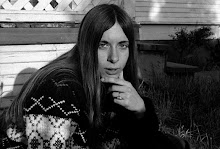
May 10, 1969
Dear Daddy,
I am having such a cool time. You wouldn't believe Keeper and Mary's place. It's a total crash pad. It's better than any place in BG. There are about 20 of us just hangin out. We camp in the yard and travel around to see the sites. There's a hip fish market on the pier where we buy our dinner to cook. The dude gives us fish parts and we go around the back of his place and drop them down in the ocean to feed the sea lions. It's so far out! The other day, though, Lippy, took us for a ride up the coast. He's from New York and went to college with us at BG. Anyway, he's got this freakie car. It's 1949 Buick. It's big and cool. You have to pull the brake pedal up with a rope. That's not so cool. We were going up the mountain real slow and he had to put on the brakes, I mean, pull the rope. Well, it came off the pedal, the car starts rolling backwards and we all jumped out. Man, I thought I was having a bad trip or something. The car hit the mountain and stopped. We all got back in and were laughing way too hard. It's ok, don't worry. I'm fine and didn't die or something. Maybe I have good Karma after all. Well, just checkin in. We are starting to plan our trip up to Washington, but not too much. It's really not good to plan stuff. It's more fun to just let it happen. Dig?
Love and Peace,
Joyce



